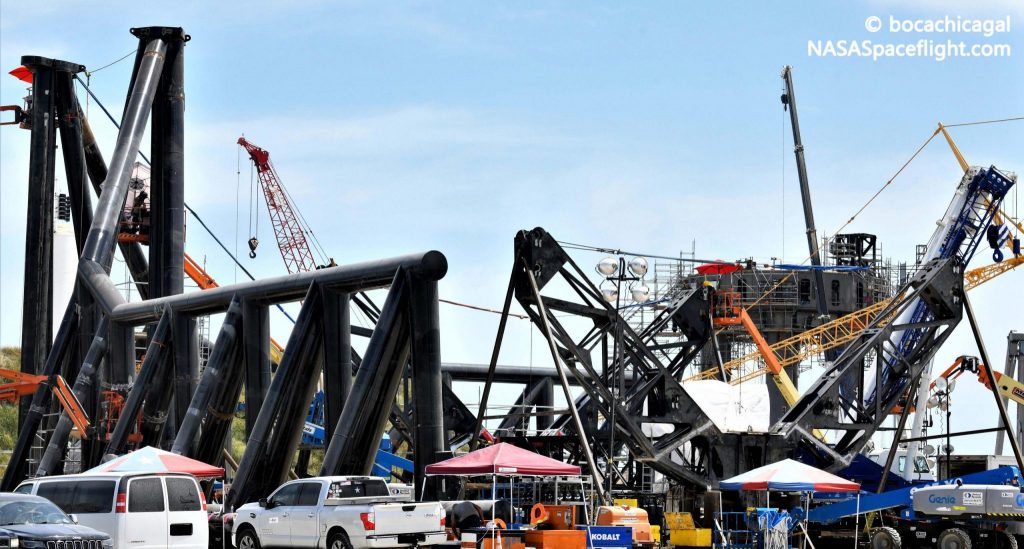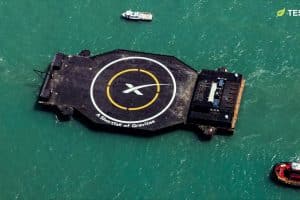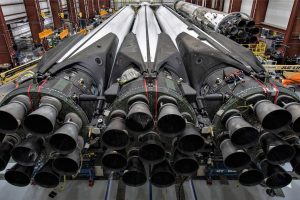CEO Elon Musk says that SpaceX could attempt to catch a Super Heavy booster out of mid-air with a tower-sized ‘Mechazilla’ robot as early as Starship’s second orbital launch attempt.
Speaking on Twitter just hours after SpaceX installed said Starship launch tower’s first arms, Musk has thankfully answered a question on the minds of many: how many prototype boosters must be expended? In a move that can be only described as unexpected, SpaceX revealed plans to fully expend its first orbital-class Starship and Super Heavy booster pair in May 2021 FCC filings, confirming (or strongly implying) that no true recovery attempts would be made.
Instead, in what could be described as a quasi-orbital debut, SpaceX intends to launch the first two-stage Starship to an altitude of around 200-300 km (TBD). Like many Falcon boosters, Super Heavy will separate a few minutes after liftoff, flip around, and boost back towards the South Texas coast, where it will attempt a soft landing 20 miles offshore in the Gulf of Mexico. Reading between the lines of Musk’s latest info, depending on the results of that ocean landing attempt, SpaceX might attempt to catch the second flightworthy Super Heavy booster on the very next launch.
Heading towards a similar fate, Starship will continue onwards and upwards like a Falcon upper stage. Based on its FCC application, SpaceX seems to have implied that Starship will stop just short of true orbit – traveling slow enough to passively reenter Earth’s atmosphere before completing a full trip around the planet. Of course, it’s possible that SpaceX simply left out plans for an intentional deorbit burn, but it does make sense that the company might try to lock in safeguards for such an ambitious inaugural test flight.
In other words, if Starship were to fail during the ~80 minutes it would spend coasting in space, its launch trajectory design would more or less passively prevent a Russian roulette scenario reminiscent of China’s recent spate of uncontrolled reentries. The feats facing Super Heavy are thankfully a fair bit simpler, though Starship booster recovery does pose its own hurdles.
In an apparent effort to reduce risk, SpaceX intends to fully expend the first flightworthy Super Heavy (potentially Booster 4) and all 29 of its Raptor engines. There will be no attempt at all to land the booster or its one-of-a-kind engines at land or on a sea-based platform – partly because Elon Musk appears to have endeavored to entirely prevent the installation – and, perhaps, the design and assembly – of legs. Instead, in one of the eccentric executive’s less intuitive gambles as of late, SpaceX will entirely dispense of more than half a decade of experience landing 90+ Falcon boosters on legs to attempt to catch Super Heavy boosters out of the air with house-sized arms tacked onto a 145m (~475 ft) tall tower.

No different than a hypothetical landing with legs, Super Heavy will still have to boost back to land, coast, and fire up several Raptor engines for a final landing burn – only on tiny handle-like hardpoints and giant moving arms instead of legs and a concrete pad. If catching boosters eventually proves reliable enough to be a worthwhile reinvention of the wheel, the only apparent benefit of the approach will be a slight reduction in Super Heavy’s dry mass.
According to Musk, though, SpaceX might not have to wait long to find out just how viable a recovery method ‘Mechazilla’ really is and will “hopefully” attempt to catch Super Heavy Booster 5 (B5) after Starship’s second orbital launch attempt. Presumably, that attempt is contingent upon FAA approval and on Booster 4 successfully simulating a smooth, accurate landing in the Gulf, as even a minor issue during a catch attempt could catastrophically damage pad hardware that would take months to repair or replace.
For now, it’s almost impossible to say when Starship S20 and Super Heavy B4 will be ready for their orbital launch debut, as that now lies almost solely in the hands of the FAA. In theory, the FAA could complete environmental reviews and grant SpaceX a launch license as few as two or so months from now. In practice, SpaceX could be forced to sit and wait for at least 6-12 more months. Regardless, SpaceX has already begun assembling and staging sections of Ship 21 and Booster 5, so the company could be ready for an extremely rapid turnaround (and Mechazilla’s first catch attempt) after Starship’s orbital launch debut – whenever that may come.





